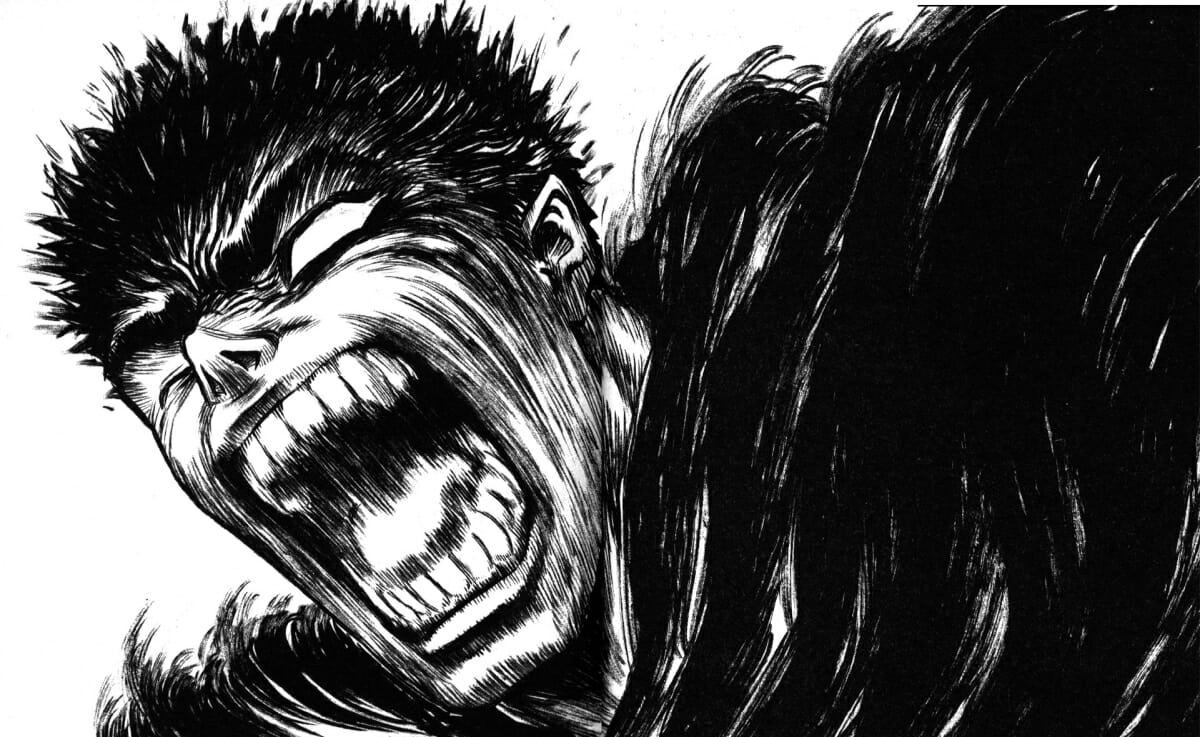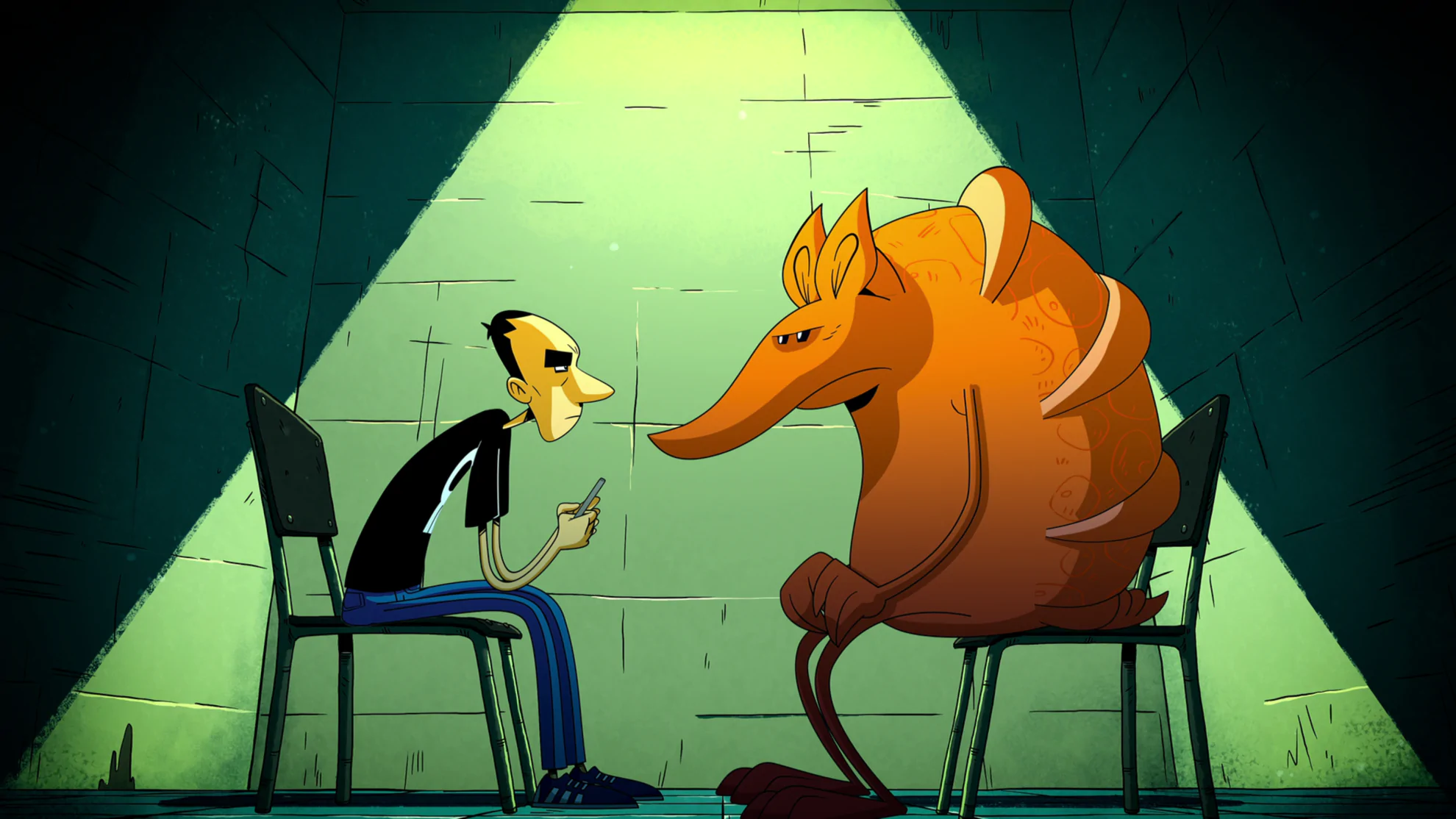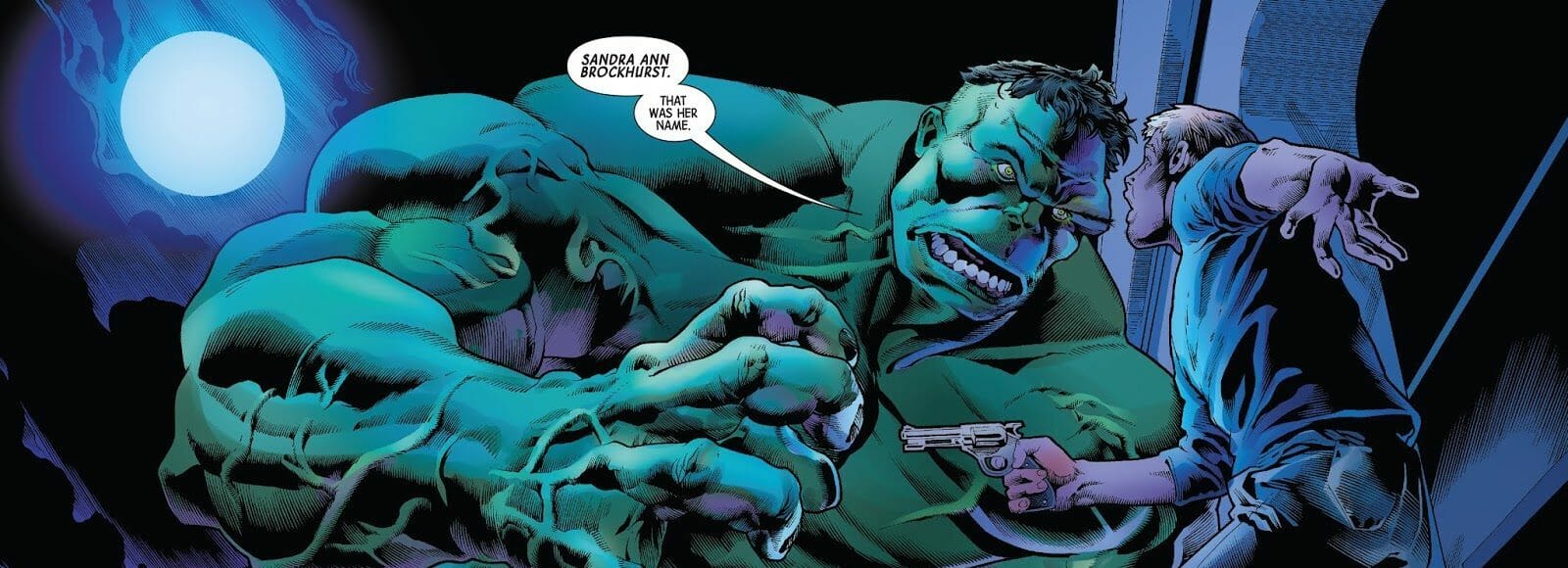
Reading the Immortal Hulk by Al Ewing gives a strange feeling. It’s a horror story, appalling, thrilling, sometimes ironic, always disturbing. This is due not only to the scariest interpretation of the Hulk ever or to the abundance of body horror. It also and mostly depends on its psychological insight. Like a psychotherapeutic process, Ewing’s run sees Bruce Banner in need of dealing with a terrible deed he committed and the tangle of negative emotions inside him once and for all. Otherwise, it will be the end, for him and the entire universe. (spoiler alert)
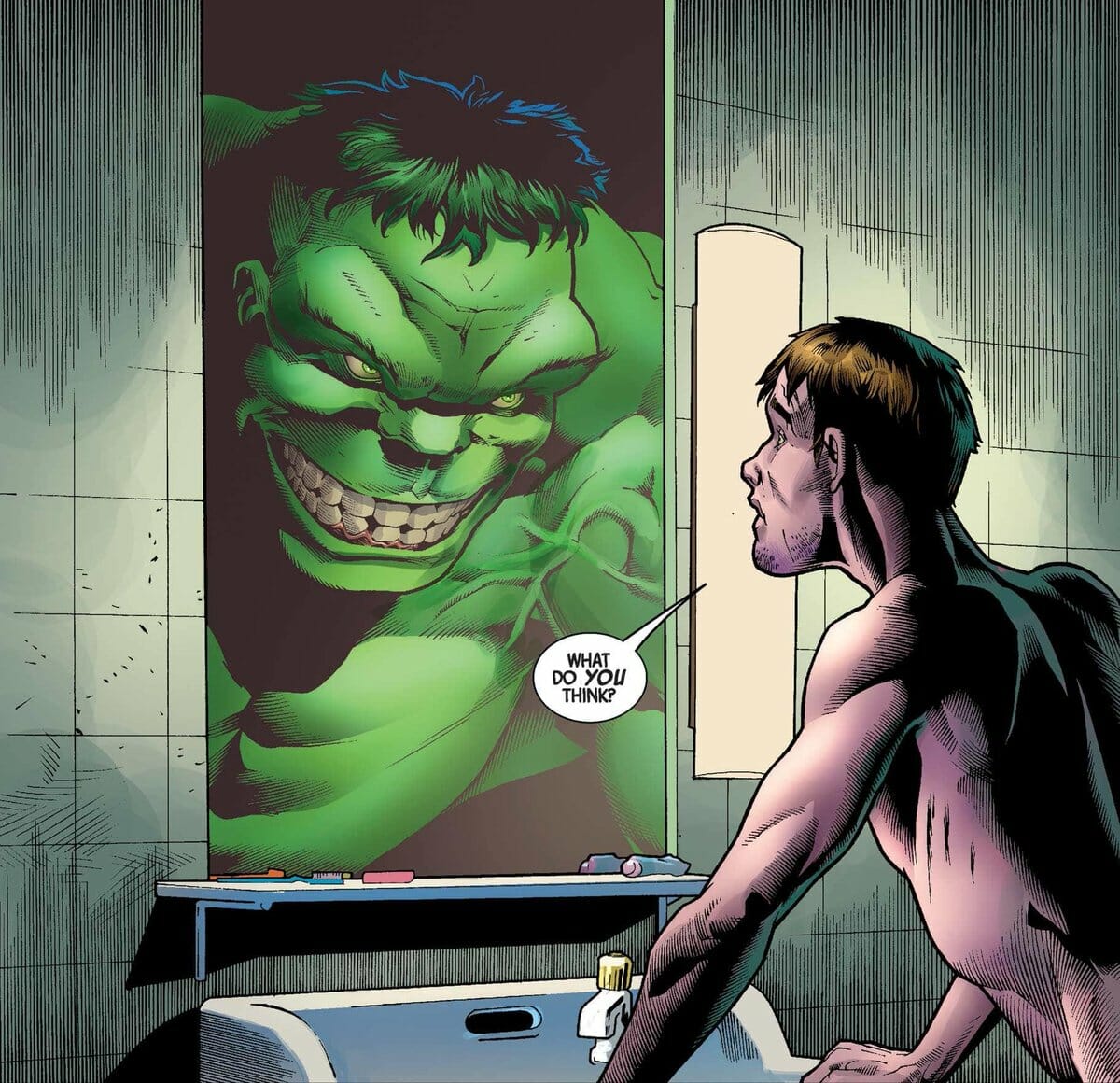
Immortal Hulk: Al Ewing represents an eternal loop of rage and pain
Anger is a natural and healthy reaction to aggravating and displeasing situations. When one is stuck in it, though, it becomes an obstacle, because it prevents people from elaborating on something they experienced, maybe an accident, a mistake, or a trauma. This is Hulk’s core as a character. After gamma radiation hits him, he turns into a blindly furious monster, who never manages to deal with what he feels.
Much like Neon Genesis Evangelion, this psychological facet of the story is parallel to a mystic and religious one. The story soon shows otherworldly features, like cabalistic references, angels and a mysterious entity, the One Below All, trying to reduce the entire universe to itself. It incarnates irrational anger and hatred, unwilling to deal with anything but itself and thus intentioned to annihilate everything that exists.
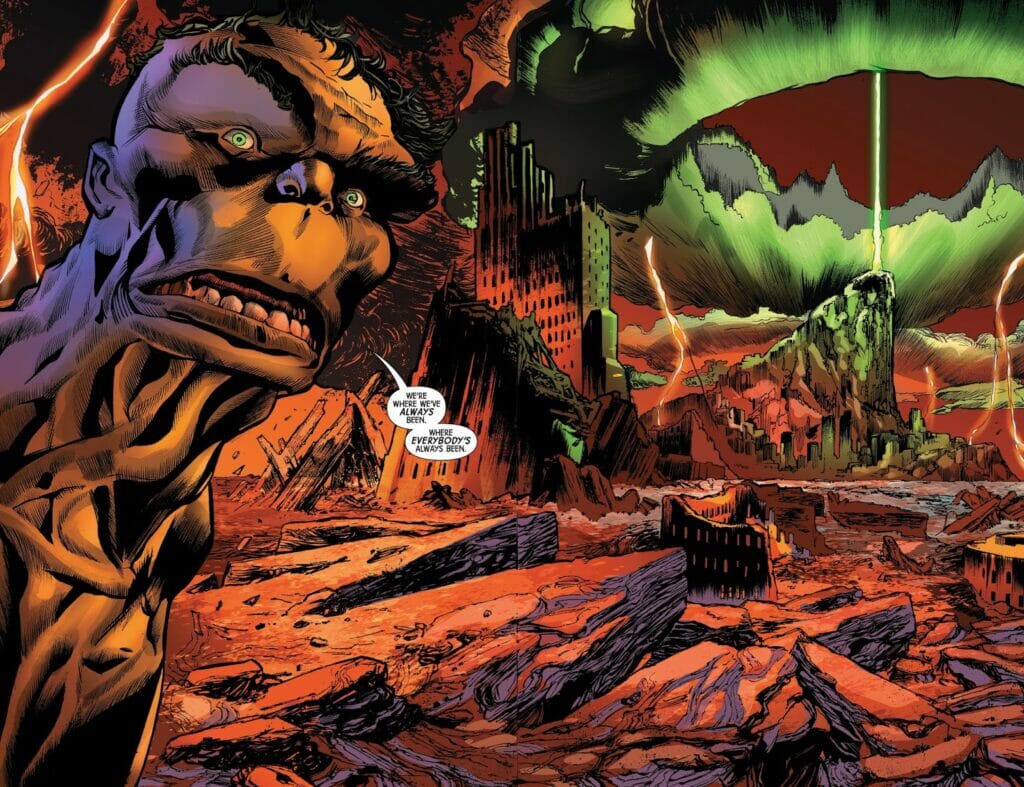
Hell itself, the Below-Place where this entity lays, is both a biblical reference and a symbolic place to which people will always return as long as they don’t deal with their personal issues. Thanks to gamma-green doors, it’s possible to get in and out of this place, basically coming back to life. However, being immortal isn’t just a superpower. It’s Hulk’s damnation to keep on living until he comes to terms with what he has done and experienced in the past.
The feeling of dread in both writing and visuals are functional to the representation of the bigger horror, which is the fractured mind of Bruce. Borrowing from Peter David’s run on Hulk, Ewing expands the idea that Bruce Banner is affected by Dissociative Identity Disorder. He will find rest only when he makes peace with the various psychological aspects of his mind and the reason which caused them.
Looking for the origin of anger
Throughout Immortal Hulk, Al Ewing walks the reader through Hulk’s recovery process dividing it into three phases: running away, dealing with the outside world and dealing with the inner self. During the first act, Bruce/Hulk are passive characters, hiding, escaping, and mostly dealing with what people want from them. Bruce is sheltered by the Devil Hulk, a version of himself that is diabolically smart, but also protective in a fatherly way. The hide-and-seek premise ends, though, as Bruce understands that his dead father Brian, controlled by the One Below All, is trying to lure him into Hell to seize his gamma energy. From now on, Hulk can no longer run from his past.
After giving Bruce a hellish childhood and killing his mother, Brian was murdered by Bruce himself in an accidental fight. The troubled relationship with his father built up the repressed rage Bruce never managed to express. In some flashbacks, he appears utterly introverted, but also obnoxious and scornful. These premises give a different depth to the burst of rage following his transformation into Hulk.
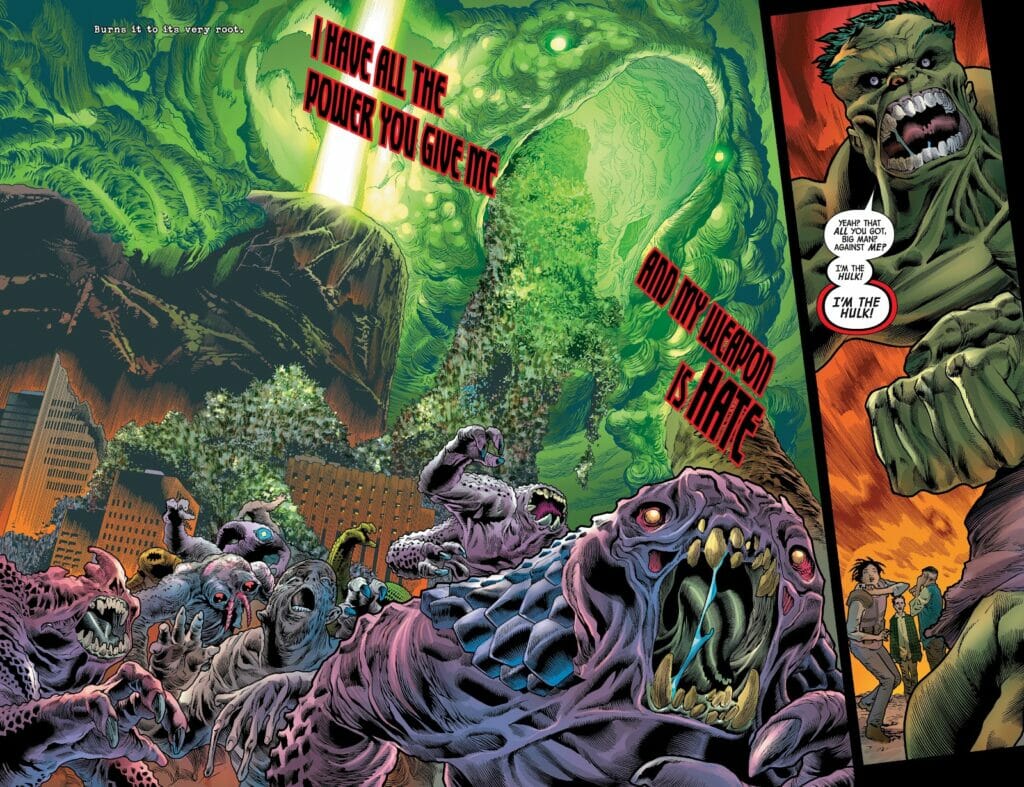
What makes Bruce’s rage so furious is that he both hates his father and suffers for the love he never gave him. But he also directs this anger at himself, for he feels guilty to have killed his father. At first, he doesn’t want to see the reprehensible part of himself who did this.
Hulk’s constant attempt to look away from his faults could make the reader think about Fleabag’s protagonist as much as Shinji Ikari from Neon Genesis Evangelion. He both bears an inexcusable guilt he struggles to deal with and constantly runs away from life’s harshness instead of dealing with it.
The vicious circle of rage
Murdering his father, though, is just the tip of the iceberg. After this killing, there are countless innocents who Hulk hurt because of his condition. Not to mention his loved ones, like his wife Betty or his friend Rick Jones. Throughout Immortal Hulk, Al Ewing shows them as damaged characters for a number of reasons. In a sort of vicious circle where troubles aggravate anger and anger produces more troubles, Hulk became a sort of calamity people can do nothing about.
It is common knowledge that Bruce and other superheroes tried endlessly to find a solution, but in his version Ewing stresses the big theme of personal responsibility. Bruce isn’t just a victim of a terrible accident, he is a threat to others because he can’t get a solid grasp on his personality. His being dangerous isn’t a matter of misfortune, but the direct consequences of what he actually is.

In this case, the endangered people are represented by journalist Jackie McGee, whose house was destroyed by Hulk. Since Bruce Banner is allegedly dead, she hunts for information about him being still alive. What actually drives her, though, is the envy of how he can freely release his rage, supposedly without consequences. A major misunderstanding Hulk will sadly acknowledge. They walk parallel paths, one traumatized by what he has done and the other by what she has suffered. Jackie initially disguise her investigation as work, but later on, it will become the most personal business. She has to elaborate on what happened to her, understand the story of her aggressor, and maybe find the courage to forgive him.
Consequences
After a first confrontation with the One Below All, the second act sees Bruce fighting the Roxxon corporation, the embodiment of the rampant capitalism consuming the planet, not without inside jokes about him being the “green” Hulk. Now that he stopped running, he has it clearly in mind the idea that everyone should pay for the consequences of their actions. At this moment, Hulk applies this principle only on the outside. Rage still possesses him, he didn’t understand yet that it is necessary to de-escalate it. But this rage is now focused, it has a purpose and it’s not just a reaction. If Bruce doesn’t act against people careless about the consequences of what they do, they will destroy the planet.
Using another inside joke, he says it’s time for Planet Hulk, a hint to the very distant and gladiatorial interpretation by Greg Pak. However, the “Planet Hulk” is also a place where people are accountable for their actions. If they don’t realize that, Hulk is ready to be their reminder.

Ironically, right when Hulk fights to avoid planetarian destruction, Ewing also shows a glimpse of the worst outcome. Right at mid-season, with a peculiar issue set at a hypothetical end of time, Hulk merged with the One Below All, similar in some way to the Celestials that appeared in Eternals. He became an annihilating entity that seeks only destruction. This is one of the potential endings: the universe devoured by a blind rage which leaves room for nothing else. A striking psychological metaphor which can be compared to Tom King’s Mister Miracle, a complex analogy about overcoming suicidal tendencies.
Finding a balance
In the end, Bruce Banner has to deal with himself. At this point, the framework is clear. On one side there is the Leader, an old nemesis of Hulk, now reappeared as the avatar of the One Below All. He represents destruction, annihilation, the desire to prevail over everything without any mediation. On the other, there’s Hulk, who is facing the ultimate ordeal. Will he give in to rage and destruction or will he find an interior balance? In kabbalistic terms, will he find an equilibrium between the power and judgment of Geburah and the loving mercy of Chesed?
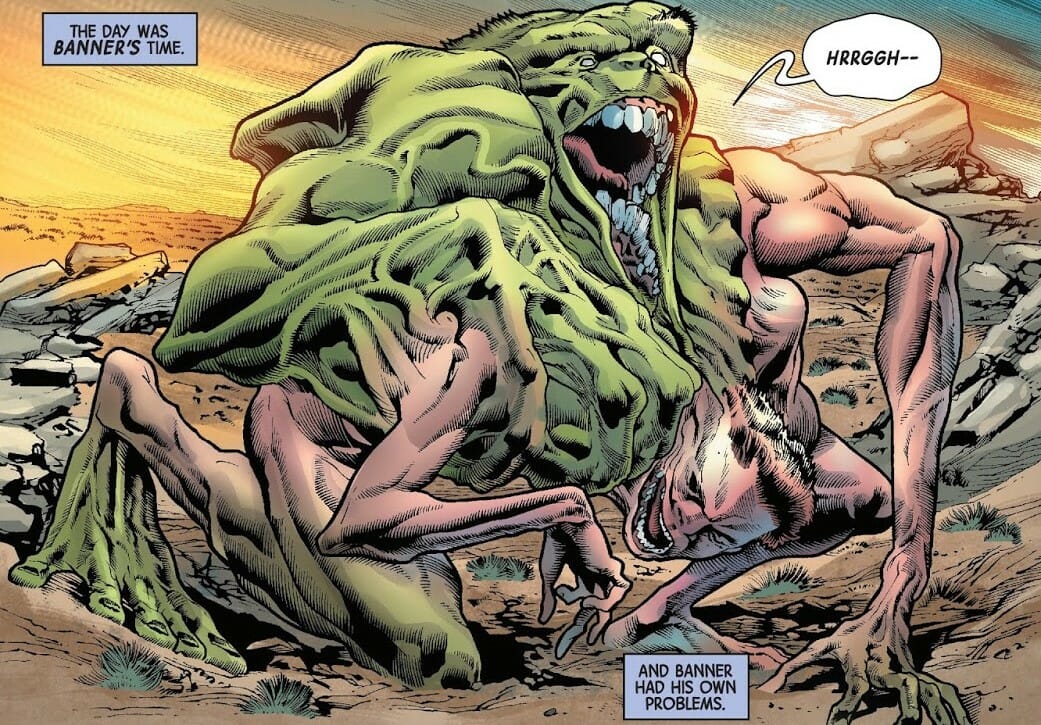
The theme of dissociation has been carried on from page one, with recurrent mirror games in the drawings. The mirror is like a box holding Bruce’s multiple identities, forcing him to see what he bears inside. Especially two personalities play a relevant role, aside from the Devil Hulk. One is the Savage Hulk, aggressive and simple-minded, he represents the hurt child who lacks the love of his father. The other is Joe Fixit, the grey and oldest version of Hulk, qualified as the selfish side of Bruce’s personality. In the end, these two will be the only ones remaining to save the day.
During a visual representation of Bruce’s mind, the Leader manages to take out the Devil Hulk and kidnap Bruce’s personality, marking a crucial step. Since he was a father figure and a coping mechanism to push away the pain inflicted by Brian, Hulk cannot really solve his issues without giving up on this part of his personality. So, Ewing makes a significant choice by making the oldest core of the character, consisting of the Savage Hulk and Joe Fixit, face the final battle.
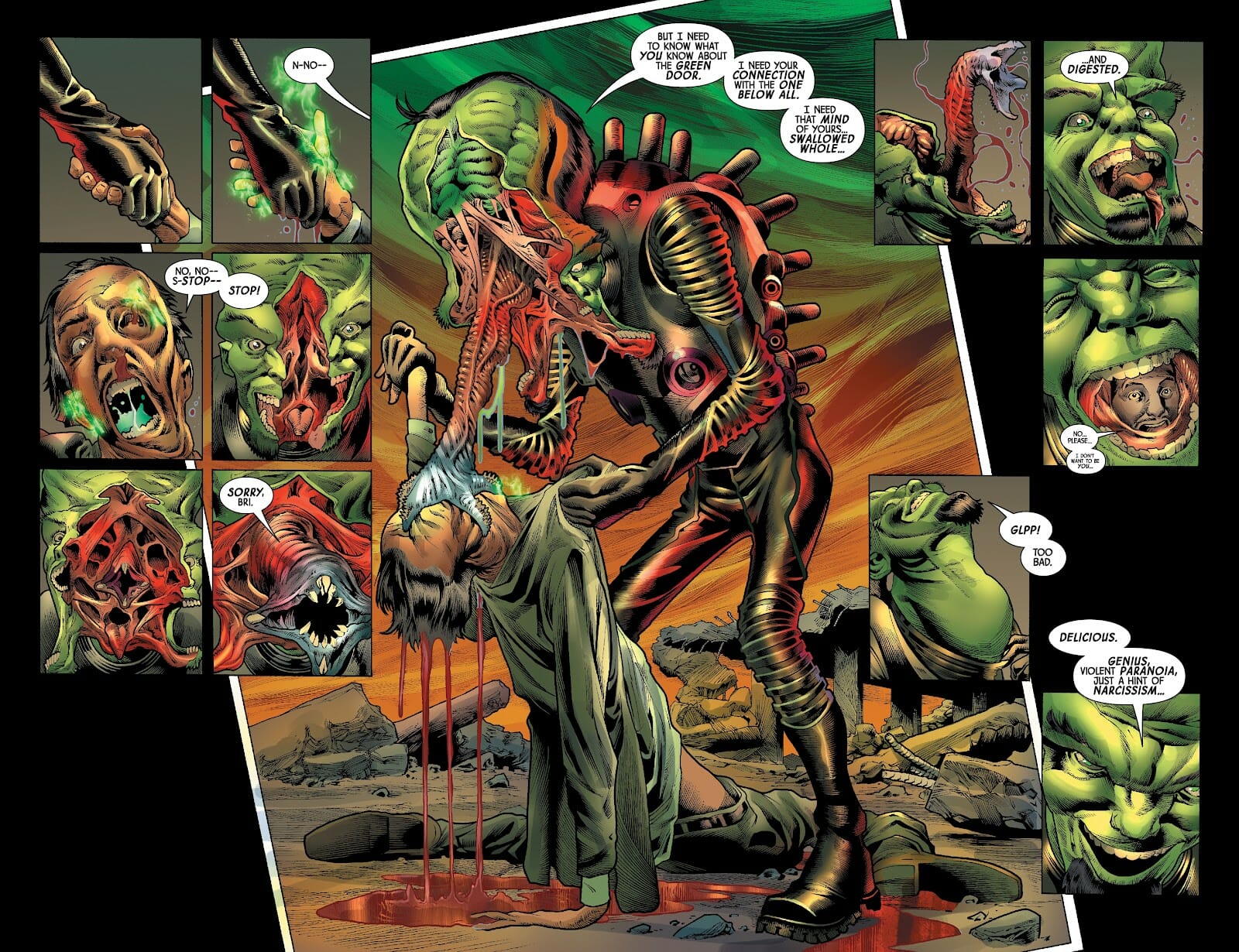
Betty Ross or the harsh reflection of mistakes and pain
Before confronting the Leader and the One Below All, there is a crucial scene in Hulk’s path. Joe and Betty had slept together, both in their monstrous guise. Betty plays a major role throughout Immortal Hulk, since Al Ewing makes her a living reproach for Hulk. Every time Bruce or Hulk look at her, she takes the form of a scary, red harpy. When Bruce asks to see the real her, she shouts back that that’s what she is. Her look is the result of all the mistakes and suffering they underwent during their relationship.
Bringing up once more the idea that the inside reflects on the outside, Ewing chooses this monstrous form for Betty to symbolize all the suffering she has endured because of Hulk. If he wants to be with her, he has to accept what he turned her into. Again, a matter of accepting the consequences of your actions, especially the most vicious ones.
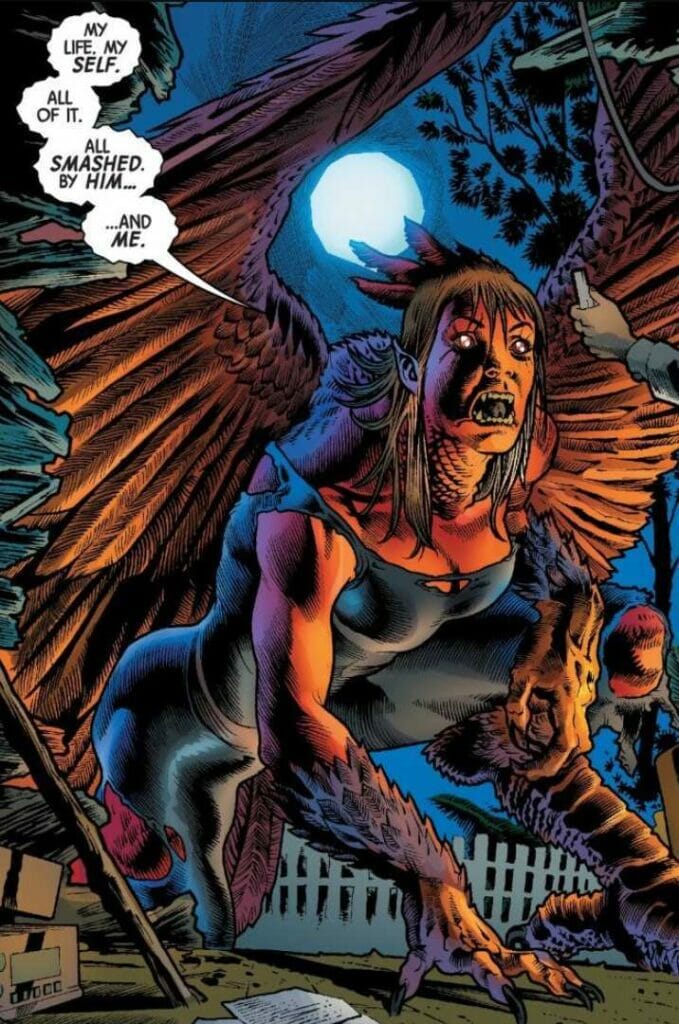
Betty now feels that Joe is the only part of Bruce who fully accepts her, despite all. But Joe confesses that he could have saved Bruce before and he didn’t. For her, it’s proof that there won’t ever be an honest and healthy relationship between them. But Joe does something new. He looks at Betty, the embodiment of all the people he made suffer, and apologizes. He finally understands that, to be better, he has to acknowledge the despicable parts of him, before trying to change them. And plainly declares his love for her.
Of course, there’s no room for happy endings: Betty flies away without saying goodbye. Moreover, a positive response would have been detrimental. Hulk is still looking for reassurances from another person, instead of finding calmness in himself. Just one last step remains to get there, though.
What will the Hulk be? Is he man or monster?
Not by chance, the last issue entails flashbacks and the two Hulks facing parts of their past. It’s the last acknowledgment of what their life has been and also the moment to leave it behind them. When the final confrontation arrives, Hulk and Joe can’t help but question the One Below All. Why do they keep on suffering and inflicting pain on everyone? Why is there a Hulk? Reminding the dialogue between God and Job, the One Below All reveals the other side of its being, the One Above All (aka God itself).
Like Job, the two Hulks are left with no clear answer. The two aspects of this entity are primordial forces which don’t answer to human rationality. They are the two principles of creation and destruction and only by finding a balance between them one can live a proper life. Namely, Hulk’s suffering, personally felt and inflicted on others, is the result of his being unbalanced. It’s up to him to find the answer to his questions. And thanks to the path he walked so far, he manages to make a change. He forgives the Leader, who made him suffer so much. But more importantly, he breaks the circle of rage because he forgives himself for everything he has done, making a concrete step to become a better person. He has no longer to look in the mirror and ask if he is a good person.
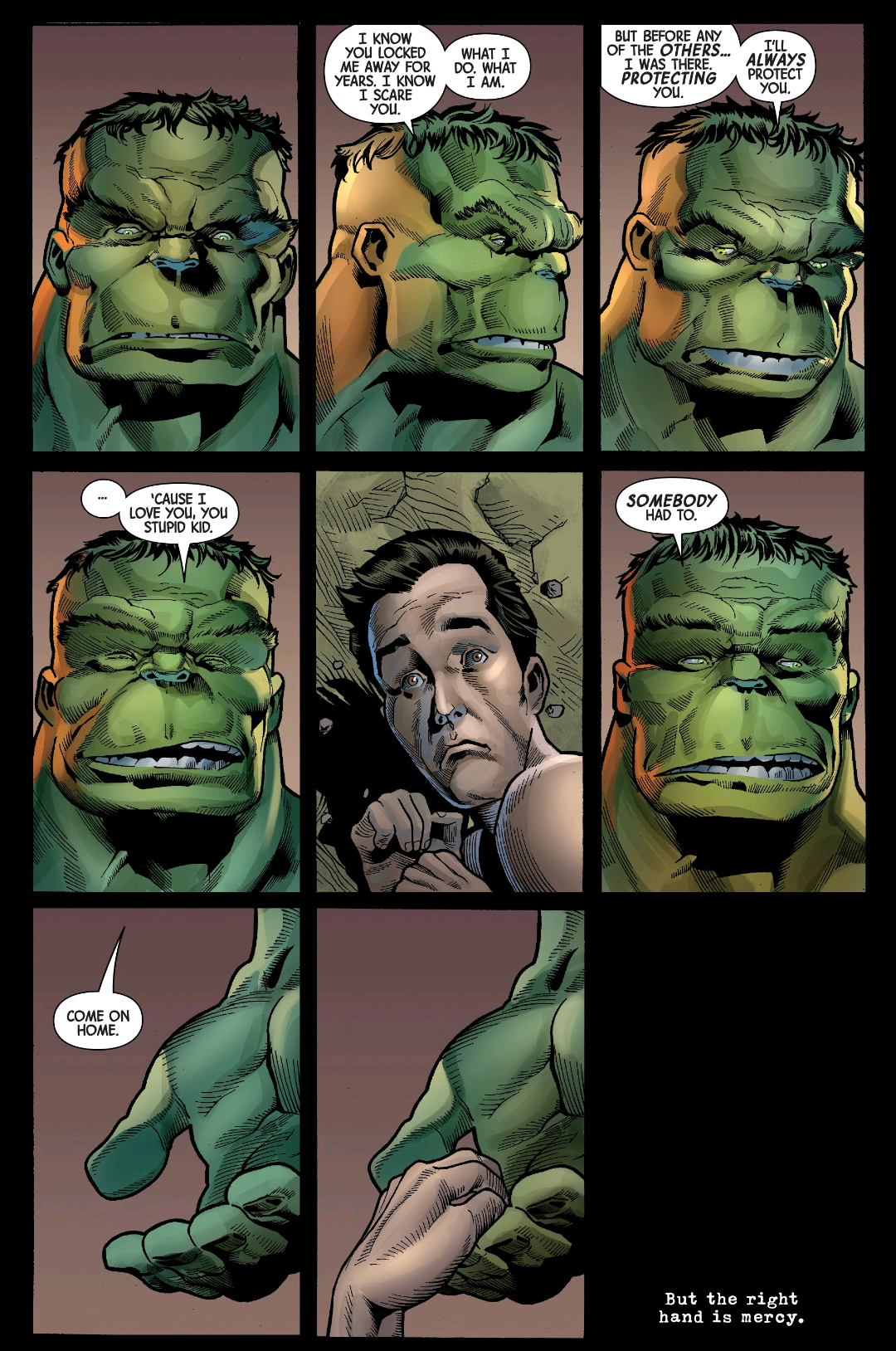

The visual horrors of the mind in the Immortal Hulk by Al Ewing
Ewing wanted to return to the original concept of the Hulk, inspired by works like Frankenstein and Dr. Jekyll and Mr. Hyde. Horror gets center stage starting from the first issue. The monster’s appearance is built up in a slowly, like Alan Moore’s Swamp Thing in The Anatomy Lesson. Then, Hulk makes his entrance in a couple of double splash pages. To realize this horror interpretation, Joe Bennett draws a gigantic figure. Hulk hardly fits on the page for what his soul bears cannot be contained.
At least at first, Hulk is a devilish monster who appears only at night. His ways are brutal, his face is chiseled and his forehead thick, giving him a ferocious look. However, Hulk’s appearance is just the beginning. As the story proceeds and the horrors of the mind emerge more and more, also their visual representation escalates. Delivering maybe the most hideous and disturbing panels of all time for a Marvel comics, Bennett draws disgusting scenes filled with pure body horror. From Alien to The Thing, the source of inspiration is evident, leaving the reader without knowing if to be astonished or nauseated.
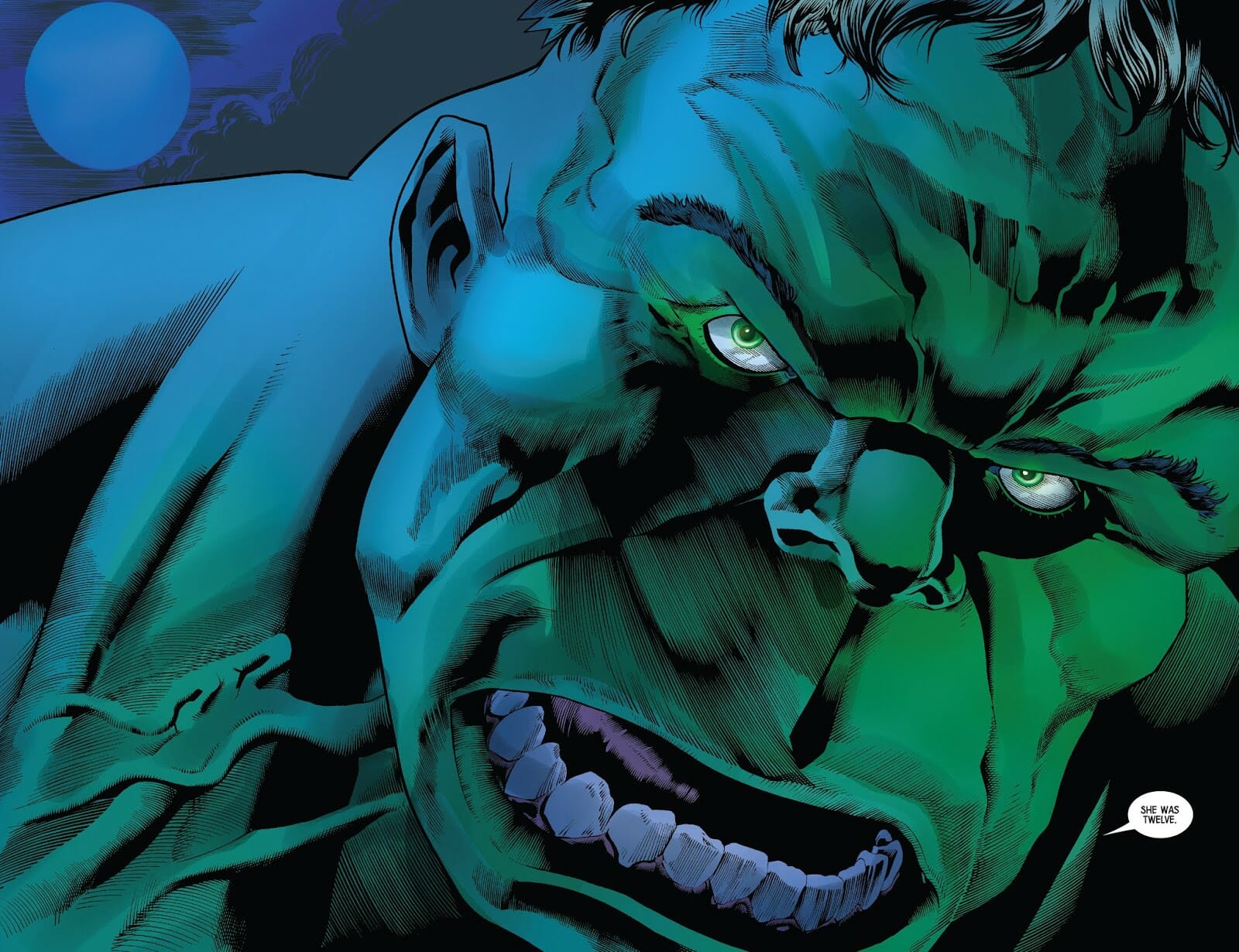
Mental illness, explored also by other Marvel characters like Deadpool, Moon Knight or Sentry, here becomes visually appalling. Sometimes Bruce’s skin explodes while he turns into Hulk, some others the transformation disfigures his body. Bennett enhances this feeling of discomfort with his realistic trait, which makes it all the more impressive.
With Immortal Hulk, Al Ewing showed once more that even comics about superheroes can talk about complex and dramatic issues, combining entertainment, thrill and food for thought. And most of all, he delivered a story about past traumas, terrible mistakes and the possibility to come to terms with them.







